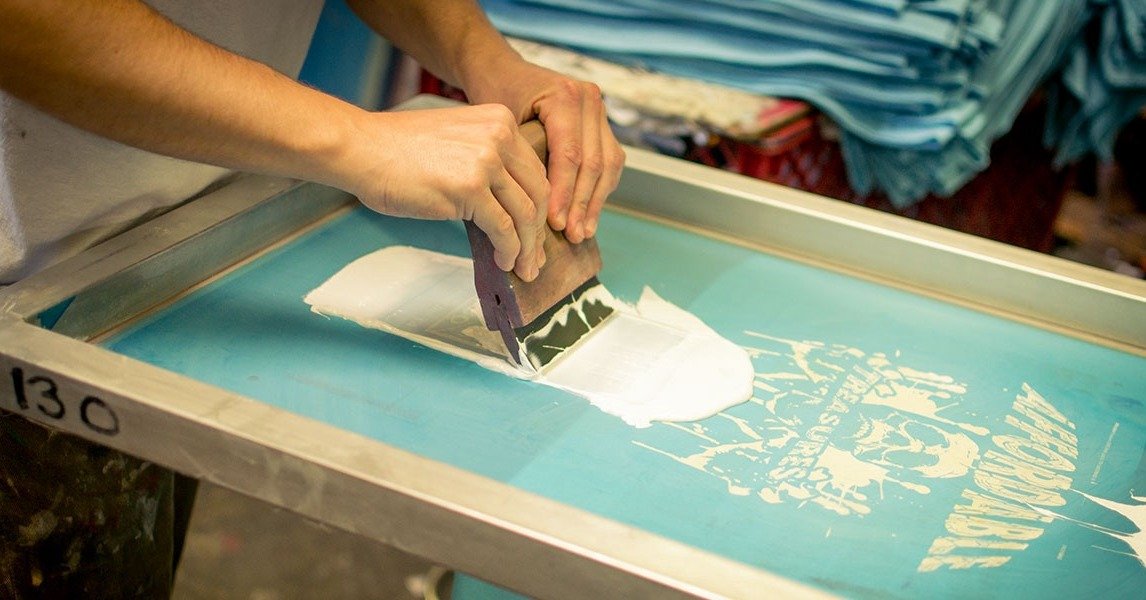What are the many stages of screen printing?
There are numerous screen printing techniques; however, they all employ basic technology.
Here’s a quick rundown of the screen printing process.
- #1 Make the design – the design is printed on a clear acetate sheet, then utilized to make the stencil.
- #2 The screen is ready – the printer must choose the appropriate mesh screen to match the design’s aesthetics and the texture of the fabrics being used. This mesh screen is then coated with a light-reactive emulsion that hardens as it develops beneath the intense light.
- #3 Exposure of the emulsion – the acetate sheet with the design is then placed onto the emulsion-coated mesh and subjected to bright light. This light will solidify the emulsion, leaving any screen sections covered by the pattern in a liquid condition.
- If the design has more than one color, a separate screen must be created for each color. Each screen will need to be precisely positioned by hand.
- #4 The emulsion is washed away, and the stencil is made – when the appropriate period has passed, all of the screen portions that are not covered by design will harden. Any emulsion that hasn’t hardened must be washed away. This creates a clear imprint of the design on the screen, allowing the ink to pass through.
- #5 The screen is dried, and any necessary corrections or touch-ups are performed — Once step 4 is completed, the screen will be fully dried, and the printer will need to make any necessary corrections or touch-ups. The stencil is now completely prepared and ready to use.
- #6 Printing preparation – the screen will be placed on the printing press. The item is then placed beneath the screen on the printing board.
- #7 Inking and Squeegee – The screen is lowered onto the printing board, and ink is applied to the top. A squeegee is utilized for pulling the ink across the entire length of the screen. This procedure forces the ink through any open regions in the stencil, imprinting the design on the product.
- This method is repeated if the order contains numerous items. When finished, the emulsion is removed with a washing fluid. The mesh can then be utilized to make a new stencil.
- #8 Dry, Check, and Finish – The printed garment or product will be dried in the final stage. This will cure the ink and provide a smooth finish. The finished product is tested for quality and cleaned to remove lingering residues.
In conclusion
Screen printing is perfect for individuals who want to print on darker-colored materials. It is a highly adaptable technology that allows you to print on various surfaces, including wood, glass, metal, paper, fabric, and plastic. In addition, because a stencil may be used multiple times in a row, it is an excellent printing method for large quantities.
Pages: 1 2
